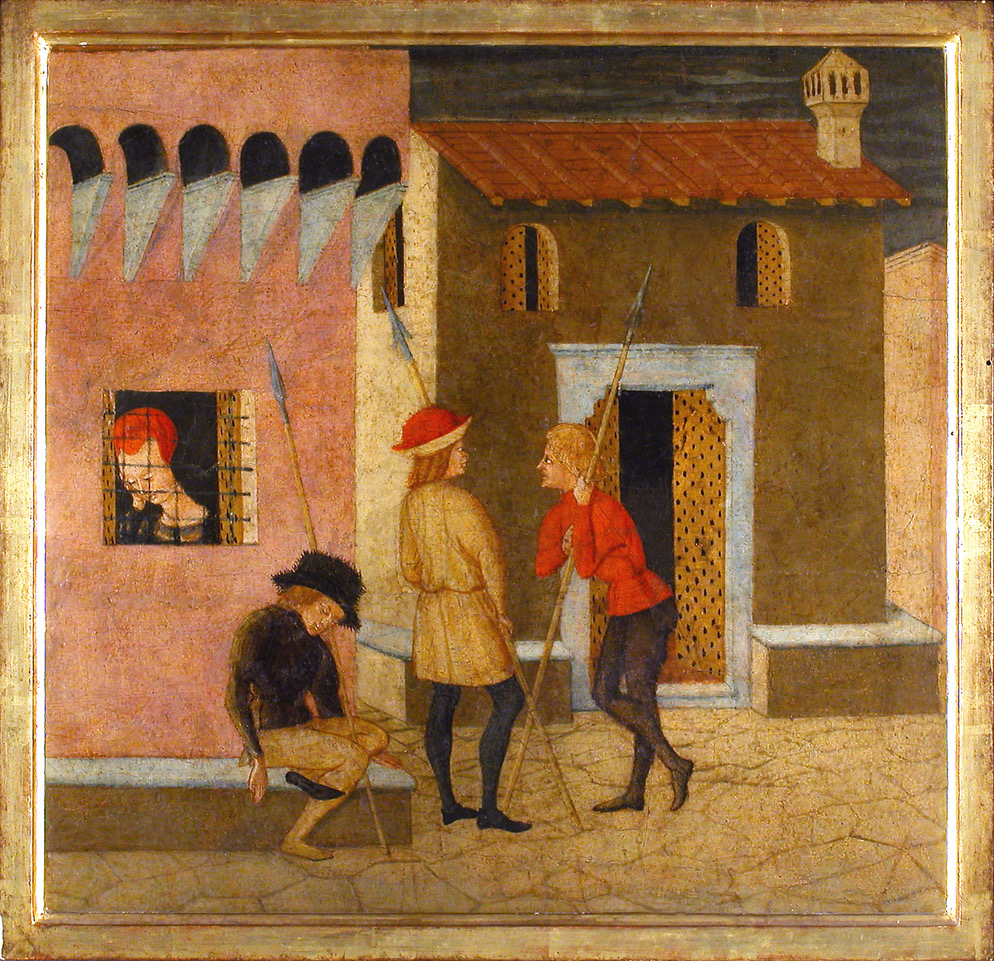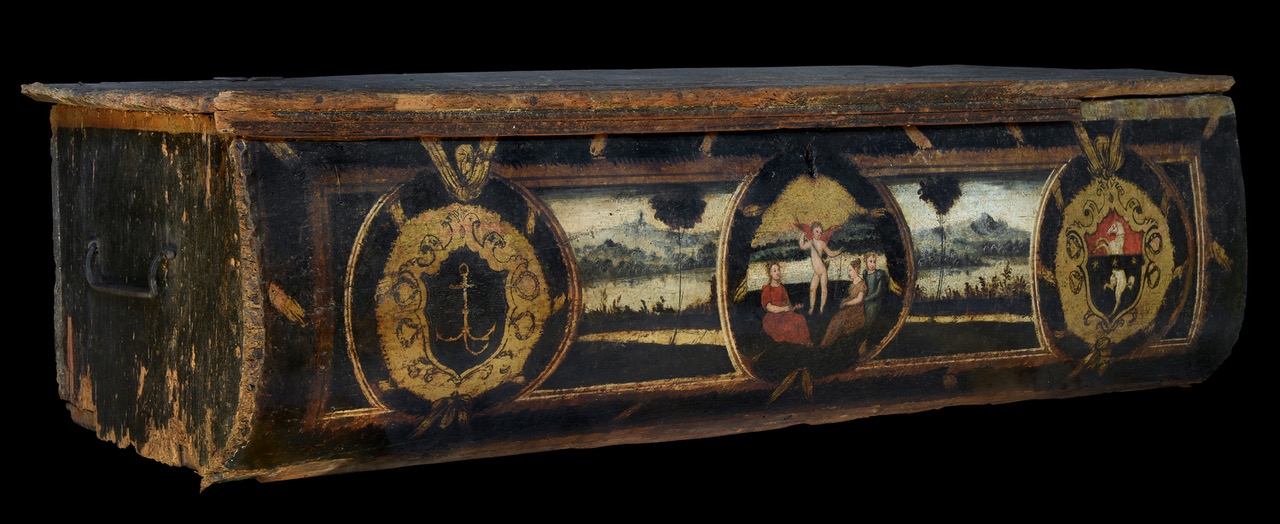Marriage chests from Renaissance Italy will be on display at the Georgia Museum of Art at the University of Georgia from March 9 through May 26. The exhibition “Life, Love and Marriage Chests in Renaissance Italy” is organized by Contemporanea Progetti in collaboration with the Stibbert Museum, in Florence. The curator is Martina Beccatini, curator of decorative arts and paintings at the Stibbert.
During the Italian Renaissance, cassoni, as the elaborately decorated wedding chests of the time are known, were an important part of marriage rituals and were perhaps the most prestigious furnishing in the house of newlyweds. Typically, they were commissioned in pairs by the bride’s father as part of her dowry and to hold her trousseau. They were very much an expression of the family’s wealth and position in society.
It is truly a rare occasion for Italian authorities to permit the temporary export of these precious Renaissance wood paintings because they are some of the most delicate and sensitive works of art to preserve. This exhibition offers an extremely limited opportunity to view exquisite panel paintings from this genre.
The exhibition focuses on the various functions of the wedding chest in early Renaissance life, such as their expression of an alliance between the political and financial interests of elite families. Courtship and marriage had precise protocols at the time, many of which are illustrated.
The paintings on the chests often included mythological, religious or allegorical imagery that offered virtuous examples for “good” wives to follow and showed grim consequences for who did not. They also presented moral and military lessons for young children. Today this imagery offers insight into Renaissance life and society. Drawing on a core selection of outstanding panels and chests belonging to the Stibbert, this exhibition analyses and illustrates life, love and marriage in a bygone era.

In addition to the chests, it includes other elements of palace décor, earthenware in majolica, luxurious fabrics, parade shields, jewelry caskets and objects of private devotion.
“For the past 30 years, the Georgia Museum of Art has been a leader in studies of Italian art,” said William U. Eiland, director of the Georgia Museum of Art. “This exhibition, devoted to the Renaissance domestic interior, is another in a long list of projects devoted to the dissemination of knowledge and scholarship. Truly with this exhibition, Renaissance Italy comes to Athens.”
The exhibition was previously at the Chazen Museum of Art at the University of Wisconsin-Madison and the Frist Art Museum in Nashville, Tennessee.
Related events at the museum include:
- Family Day on March 9 from 10 a.m. to noon, including face-painting and Renaissance demonstrations
- Toddler Tuesday on March 19 at 10 a.m. (register by emailing sagekincaid@uga.edu)
- The biennial Emerging Scholars Symposium, organized with the Association of Graduate Art Students at UGA, with a keynote speech by scholar Paul Barolsky on March 22 at 4:30 p.m. and a full day of presentations on March 23
- 90 Carlton: Spring, the museum’s quarterly reception, on March 22 from 5:30 to 8:30 p.m. ($5, free for members)
- A public tour with Pierre Daura Curator of European Art Nelda Damiano on March 27 at 2 p.m.
- A lecture by art historian Louis Waldman on April 18 at 5:30 p.m.
- A tarot workshop led by Serra Jagger on April 18 from 6:30 to 8:30 p.m. ($25; register to callan@uga.edu or 706-583-0111)
- A performance of Florentine wedding music by students and faculty from the Hugh Hodgson School of Music on April 19 at 4 p.m.
- A “Shakespeare and Love” film series including Baz Luhrman’s “Romeo + Juliet” (May 2 at 7 p.m.), “Shakespeare in Love” (May 9 at 7 p.m.) and “Rosencrantz and Guildenstern Are Dead” (May 16 at 7 p.m.)
- A gallery talk by Dr. Steven Grossvogel, associate professor of Italian, University of Georgia, on May 8 at 2 p.m., and
- An Artful Conversation with Sage Kincaid, associate curator of education, on May 22 at 2 p.m.
All programs are free and open to the public unless otherwise indicated.


